Explosive Ordnance Disposal, or EOD, is a high-risk, high-reward position in the Air Force.
If being around highly explosive materials daily is something that excites you, then this position is perfect for you.
Serving as an Air Force EOD specialist puts you in situations that require you to be calm, collected, brave and skilled.
Related Article – How To Join The US Air Force
Jump To A Section
What Qualifications Do I need as an Air Force EOD Specialist?
Qualifications to meet this position may be more specific than other specialist positions.
Education:
You must have, at minimum, a High School Diploma or GED.
A prior history in mechanics, physics, or electronic theory is desirable.
Technical training requires 169 days at Sheppard Air Force Base in Texas and Eglin Air Force Base in Florida.
Training for this position is on-going as new technology emerges and best practices are adjusted.
Related Article – Navy Explosive Ordnance Disposal (EOD) Technician: Career Details
Qualifications:
- Age: 17 to 39
- Height: 62-80 inches
- Completion of 8.5 weeks of Basic Training
- No issues with depth perception or color vision
- No history of emotional instability
- Cannot have claustrophobia
- Score at least 30 on EOD Selection Model
What does an Air Force EOD Specialist Do?
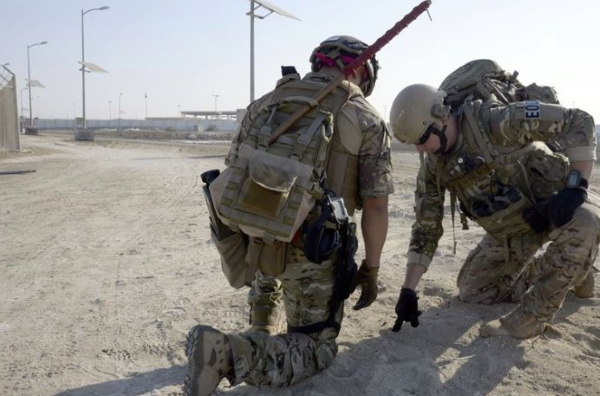
An EOD is responsible for keeping everyone safe from unknown or explosive materials.
As an EOD, your tasks will include handling explosives daily and analyzing unknown munitions for different intelligence agencies.
This position will also require detecting, disarming and disposing of unsafe ordnance.
EOD specialists can work at any location around the world and can serve on the Air Force bomb squad.
When not deployed, there is still a large demand for help stateside from an EOD specialist.
The demand comes from the many bases in the US or even from a civilian entity.
Related Article – Army EOD (MOS 89D): Career Details
You can have a lot of interactions with civilians.
There may be a need to interact with civilians to identify and disarm an unknown object or to disarm an old hand-grenade that someone found in their grandfather’s belongings.
You do not just protect the citizens, protecting the president, vice present or other dignitaries may also be part of this position.
An Air Force EOD specialist will work in all environments, with unfamiliar situations, when there may be noise or chaos surrounding them.
No two situations will ever be exactly the same.
This may not be a position where you are home every night, but it is very rewarding to know that you have detected and destroyed something that could be disastrous.
An Explosive Ordnance Disposal specialist will ensure the route is safe before any other personnel go onto that route.
High responsibility surrounds this position because it is up to you to deem a location or route safe and operations do not continue until you do.
Related Article – Air Force Drone Pilot (1U0x1): Career Profile
There are a large number of tools and robotic equipment that an EOD will get to play with.
You may not actually be at the location where the bomb or threat is located.
There are times when you are using a robot from a different location.
Safety is the most important piece when working as an EOD Specialist.
You must be safe and trust that your team around you is also being safe.
The video below from the Air Force explains what it is like to be an EOD Specialist.
What is Training for Air Force EOD Like?
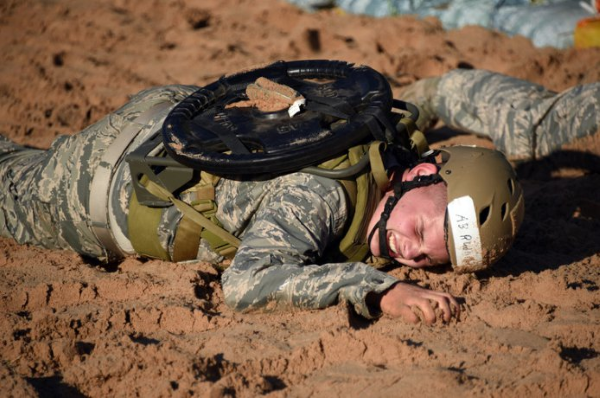
The training pipeline is widely known for being difficult, so you may be wondering what it actually involves.
Training for Air Force EOD will be completed by going to two different AFB locations.
Sheppard AFB, Texas
After completing Basic Training, you will leave to complete your technical training at Sheppard AFB.
Technical training begins as soon as you arrive and involves mastering 4 main areas.
1. Physical Training
2-4 hours of each day is dedicated to physical training.
The point of the physical training is to ensure that you can meet the physical requirements when you are cold, hungry, or physically drained.
There is heavy equipment involved and you have to move that equipment safely and quickly in all situations.
Being physically in shape and mentally strong when you are depleted are very key elements to this position.
2. Academics
The next part of training involves academics.
In a classroom setting, you will learn history and prior Air Force EOD missions.
3. Tools
After learning the history you will begin working with the tools and learning to assemble/dissemble them.
This will include actual hands on training with some of the tools.
4. Live Demolition
If determined ready, the next step is to start working in the live demolition range with actual C4.
Eglin AFB, Florida
When all areas are complete and both you and your trainers feel that you are ready, you will head from Sheppard AFB to Eglin AFB.
At Eglin AFB, you will start working with and learning all of the properties of explosives right away.
You will learn more about the tools that are used and begin learning about how to identify different ordnance.
Your training will not just cover basic explosives, you will learn about grenades, land mines and rockets.
As an airman, the emphasis will be to learn all aircraft explosive hazards.
The next part of the training will include actually putting on the bomb suit and completing live work in the training fields.
Part of the training that individuals tend to like is when you are training on robotics.
Some of the technology that is used will have similar controls to the gaming controllers that you may be used to at home.
Your trainers will do everything they can do ensure that you are ready and comfortable prior to completing the training pipeline.
The video below from the Air Force summarizes the training pipeline and each of it’s parts.
Air Force EOD Job Reviews
The number one response that you get from people serving as an EOD specialist in the Air Force is the camaraderie that surrounds everyone in the position.
You become part of a team that takes care of each other.
No matter where you go, if you find other people in the position, you know that you will have someone to support you.
The technical training has one of the higher attrition rates but can lead to one of the most satisfying careers.
People re-enlist in this position because they love what they do.
Related Article – Pros And Cons Of Joining The Air Force
When looking at reviews of this position on places such as Glassdoor, you will find that the majority of people who have completed training, were very happy with their decision to become an EOD.
Here are two reviews from Explosive Ordnance Disposal Technicians at the training area in Eglin AFB and in South Carolina.
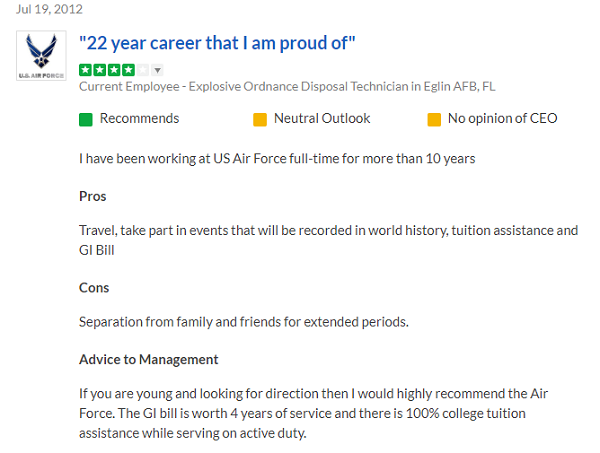
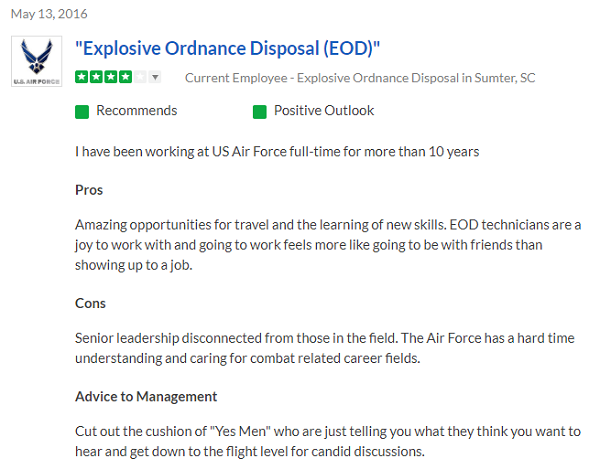
Air Force EOD Pay and Benefits
Every airman is paid the same base salary depending on rank and years of service.
You can receive additional compensation based on the job you have and where you are stationed.
The base salary table is below.
| Insignia | Pay Grade | Rank | Abbreviation | 2023 Minimum Monthly Pay |
|---|---|---|---|---|
| E-1 +4 months | Airman Basic | AB | $1,917.60 | |
| E-2 | Airman | Amn | $2,149.20 | |
| E-3 | Airman First Class | A1C | $2,259.90 | |
| E-4 | Senior Airman | SrA | $2,503.50 | |
| E-5 | Staff Sergeant | SSgt | $2,730.30 | |
| E-6 | Technical Sergeant | TSgt | $2,980.50 | |
| E-7 | Master Sergeant | MSgt | $3,445.80 | |
| E-8 | Senior Master Sergeant | SMSgt | $4,957.20 | |
| E-9 | Chief Master Sergeant | CMSgt | $6,055.50 | |
| E-9 | Command Chief Master Sergeant | CCM | $6,055.50 | |
| E-9 | Chief Master Sergeant Of The Air Force | CMSAF | $6,055.50 |
At first glance, you may look at these numbers and think that the base salary is not what is expected or that it is all that it includes.
Keep in mind that the Air Force gives you many benefits that come in addition to your pay.
The benefits can change based on if you stay on or off base.
For an individual who lives in housing on base, your housing costs are covered.
This includes living expenses, utilities, and maintenance.
Not only are living costs covered, but meal allowances are provided as well.
Single airmen living on base have a meal account.
Using this meal account, they can receive up to four free meals from the on-base dining facility a day, for free!
There is also the option of shopping at on-base, tax-free department and grocery stores.
When living at the base, individuals also have access to a variety of recreational locations.
These locations include gyms, sporting facilities, social gatherings and sporting clubs for both you and your family.
For individuals who choose to live off the base, a tax-free housing allowance is available.
This allowance is based on rank, family status and location.
All individuals, regardless if they choose to live on or off base, will be provided with low-cost, quality health care and retirement plans.
You will receive options to enter into a Thrift Savings Plan, have paid sick time, and 30 days paid vacation a year.
As soon as you begin Basic Training you are considered enrolled in Community College of the Air Force and you begin collecting college credit.
For continuing education scholarship opportunities are available.
Tuition assistance is also available, up to 100% coverage, using the Air Force Tuition Assistance Program, the Post-9/11 GI Bill, or the Montgomery GI Bill.
Related Article – 10 Best Air Force Jobs For Civilian Life
Summary
Airmen who complete the Explosive Ordnance Disposal training go through one of the most stressful and rigorous training courses.
After completing basic training, you will go to Sheppard AFB in Texas and then move onto Eglin AFB in Florida.
The training pipeline is designed to ensure you come out mentally and physically ready for any situations.
While Air Force EOD training is stressful and rigorous, you will complete training into a position that is rewarding with family at any base you visit.
As an Airman, you will receive great pay and benefits whether you choose to live on or off base.
You also will get to complete the exciting in field (physically or through robotics) work all over the world, in deployment and civilian areas.
Reference:
See Also
12 Best Military Jobs By Branch
- 5 Worst Jobs in the Air Force - June 20, 2024
- 4 Steps For Visiting An Air Force Recruiter Near You - June 19, 2024
- Air Force Safety Specialist (1S0X1) - June 19, 2024

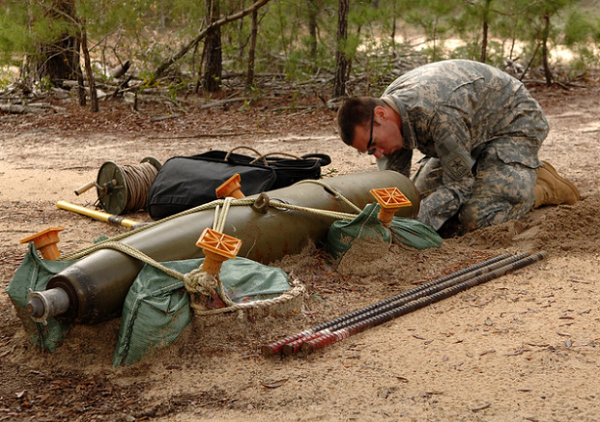

I spent 10 years as USAF EOD and loved every minute of it. The challenges, the camaraderie and the esprit de corps make it one of the best things I’ve ever done. I can’t tell you the number of guys who I had never met before showed up at the shop needing a place to stay, and started with me and my family, no questions asked. They were EOD, and that was all that mattered. But please know: I had two friends from EOD school that were killed defusing ordnance in Iraq and are on the wall. It is truly a dangerous job.